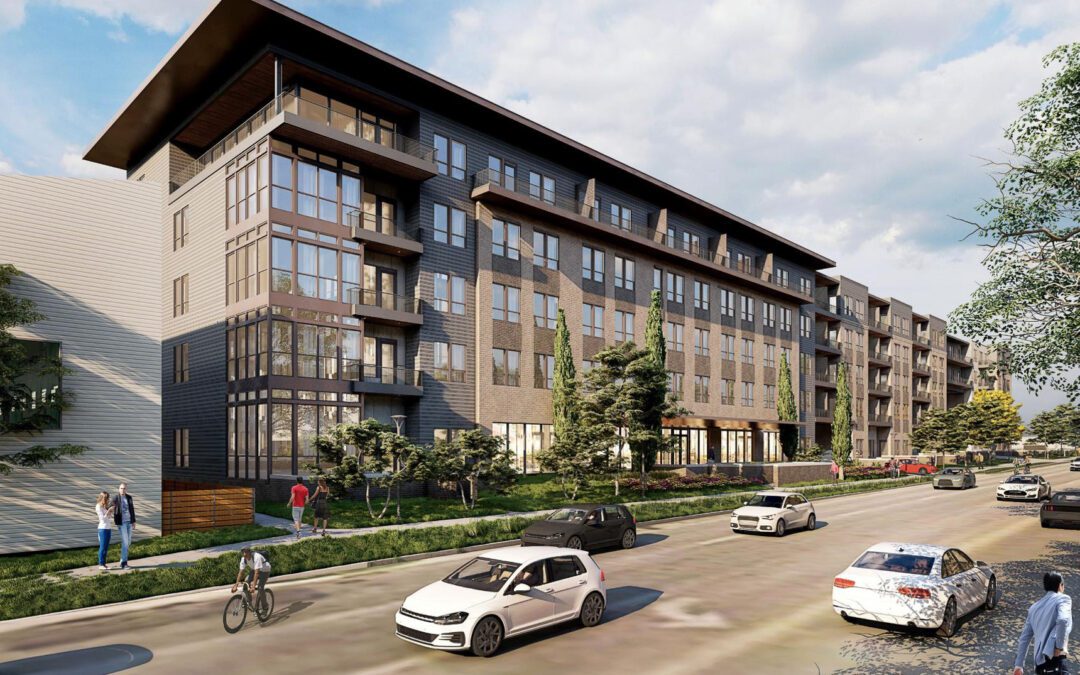
Chicago Industrial Properties
Contributions By: Jim McShane, CEO
The McShane Companies
For this month’s Industrial Insider, we spoke with three top developers, both locally and nationally, to discuss the resurgence of spec building construction in the Chicago area, as well as in certainmarkets on a national basis. We appreciate the interesting information provided to us by the following industry leaders: Jim McShane, Chief Executive Officer of The McShane Companies; Tom George, Senior Vice President and Regional Managing Director at IOI; and, Mike Yungerman, Vice President-Real Estate Development, Opus Development Company.
Q. Industrial spec building has returned to Chicago! Why did your company decide to start building spec this year?
Jim: Conor Commercial Real Estate, one of The McShane Companies, embarked on its first post-recession speculative project during the Fourth Quarter of 2012, when we purchased a 20-acre parcel of land in the Northwest Corporate Center at 1-90 and Randall Road in Elgin, Illinois. The vast improvement in market fundamentals created a compelling reason for us to evaluate and move ahead with a new speculative facility in the northwest suburbs of Chicago at that time. Our research indicated that Elgin’s vacancy rate (in modern industrial properties that offered at least 24′ clear height) was less than 5%. That provided the incentive for Conor Commercial and our co-developer, Globe Corporation, to move forward with the speculative industrial development opportunity within this submarket.
Tom: IOI broke ground last year on a 602,000-square-foot speculative building in Bolingbrook because of the improving health of the industrial market, and because we saw a localized shortage of available space in the 200,000 to 600,000-square-foot range. The rest of the ingredients (land, money, and a willing investment committee) were available, so we commenced.
Mike: Opus entered into a joint venture agreement with USAA last fall, and began construction of 1-88 Gateway Logistics Center in October 2013. We will deliver the 604,000-square-foot building in early July. Opus has been a believer of the 1-88 market since our involvement with Butterfield Business Center in the mid-90’s. Our strategy has been to identify submarkets with low vacancy and good historical absorption; and then try to find a site that can fill a void in the market. This is no easy task. Chicago is a very competitive industrial market with a deep pool of talented developers all pursuing the same opportunities. When Opus decided to move forward with the project, the 1-88 corridor had a 2.7% vacancy rate for building 250,000 square feet or greater with no buildings able to provide 400,000 square feet of contiguous space. The corridor has also averaged more than 2.5 million square feet of positive absorption over the past three years.
Q. In your opinion, have the net rents increased sufficiently over the last 12-18 months to warrant new construction? Have your rent expectations been adjusted to address the current timing of the market?
Jim: We are clearly experiencing a much improved market overall and, in particular, within the industrial sector. Rents have slowly risen from the low experienced in 2010, roughly 30% below prerecession highs, back to their previous 2007 highs in many submarkets throughout Chicago. We actively maintain a careful evaluation of the variances in rents throughout the markets and engineer our rent expectation to both user demand and the modern space that we offer to the end-user.
Tom: Net rents have increased to a level which supports new construction. However, effective rents may not be all the way there. We are relying on the continued contraction of available space along with the economic and operational benefits of a contemporary building to bridge the remaining gap.
Mike: Over the past 18-24 months, most Chicago submarkets have experienced a significant decrease in vacancy and increase in rental rates, back to pre-recession levels, and perhaps slightly higher rents. The 1-88 market fits this description. The lack of available Class A product has forced many companies to make decisions to start build-to-suits which always demand higher rents. 1-88 Gateway Logistics Center provides many users with a viable alternative to build-to-suit.
Q. Following up on question #2, what indicators have you seen in the market that convinced you that this is a good time for building new spec product?
Jim: Over the past 18 months, we have been witnessing a significant swing in supply and demand. At the worst of the recession (late 2008 through early 2011), new construction was practically non-existent with the exception of the occasional build-to-suit. The absence of new speculative development allowed for the slow and steady absorption of a significant amount of contemporary space (higher clear height and well-docked properties). This eventually swung market fundamentals positively in favor of new investment.
Tom: The reasons we have decided to build a spec building include: falling vacancy, spot shortages, increasing number of build-to-suits, rising lease rates and the emergence of pre-leasing.
Mike: In addition to increased rents and lower vacancy, the availability of debt and capital is a key factor. Investors who historically were net-lease buyers are now looking at partnering with developers to build spec, allowing them to get into the deal at a lower basis but taking some leasing risk. Exit cap rates remain low, especially for core industrial, and are expected to remain there at least for the balance of the year. While examining existing submarket statistics is important, another factor is the status of neighboring feeder submarkets, from which a high percentage of the potential tenants will come. In 2013, according to the Colliers 2013 Year-End Market Report, the Central DuPage submarket experienced the largest increase in year-over-year net absorption and one of the highest leasing volumes in all of Chicago.
Q. Please talk a little about the building(s) that you are constructing (i.e. location, size, clear height, dock ratio, trailer parking), and how/why you decided to build that particular product.
Jim: For our new speculative project in Elgin, Northwest Pointe, we designed and constructed a 342,620-square-foot cross-docked facility. The building offers as many as 68 docks (one for every 5,000 square feet) and can be divided into tenant spaces from 70,000 square feet. We chose a large building (relative to the Elgin market) because the greatest void in that active market area was in larger blocks of space (greater than 250,000 square feet). The Conor Commercial/Globe Corporation speculative industrial building can have several trailer spots added; however, the Elgin market has not traditionally been a heavy trailer storage market like 1-80, 1-55 and what is occasionally developed within the O’Hare area.






